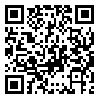Volume 10, Issue 1 (volume10, Issue 1 2022)
CPJ 2022, 10(1): 76-90 |
Back to browse issues page
Download citation:
BibTeX | RIS | EndNote | Medlars | ProCite | Reference Manager | RefWorks
Send citation to:



BibTeX | RIS | EndNote | Medlars | ProCite | Reference Manager | RefWorks
Send citation to:
balash F, Omar A H, sanjari N. Attitude, Perception and Judgment changes in cope with very cold weather conditions: a qualitative study. CPJ 2022; 10 (1) : 100
URL: http://jcp.khu.ac.ir/article-1-3567-en.html
URL: http://jcp.khu.ac.ir/article-1-3567-en.html
, ndsanjar12@gmail.com
Abstract: (4596 Views)
Significant psychological changes in extremely cold regions are considered as natural human reactions. Antarctica has very cold conditions and is considered a natural laboratory for many studies in various fields. Survival, in this harsh environment, is unmanageable without human preconditions; Antarctica with a focus on resilience and psychological adjustment, an opportunity for the individual to approach the study of psychological adjustment, examining the impact of weather conditions, limitations, isolation and lack of daylight, etc. on mood changes, stress and dynamism. is showing. In this article, the psychological changes of six researchers, who are twenty-three days of scientific travel in the cold region in the south of the region, are conceptualized with a systematic concept. In terms of methodology, thematic analysis and collected categories, interviews, observations and documentary analyzes have been used. Researchers' experiences were analyzed in the field and the emerging factors were categorized as attitudes, strategies and. These three factors were divided into thirty-six positive and negative factors at the individual and group levels. Theoretically, positive and negative factors are supported by force field theory, which contribute to the very cold region through conceptualization. Positive attitudes based on the data collected in this exploration include: self-awareness, self-direction, self-control, self-efficacy, self-confidence, self-motivation and self-optimism. On the other hand, negative attitudes are self-awareness, lack of self-direction, conflict with self, inefficiency, self-doubt, self-destruction, self-contradiction and pessimism. There are positive and negative strategies for strategies such as attitude at the individual and team level. In a person, positive strategies include: positive self-talk, positive thinking, meditation, muscle relaxation, spiritual recitation, self-control, and negative strategies include negative self-talk, negative, confusion, justification, religious belief, and loss of self-control. . On the other hand, different strategies with teammates in the direction of positive expressions such as humor, team coordination, control control, team performance, control of negative effects, accessibility and in part including nagging, disagreement, deviation from self-success and immoral reaction. Is. Peacefully, positive and negative factors, such as attitudes, strategies, and positive and negative effects on the environment, in fact, and the conflict of all the factors that lead to specific action in the face of various difficult situations.
Article number: 100
Keywords: Psychological changes, Extreme cold weather
Type of Study: Research |
Subject:
psychology of human behavior
Received: 2022/03/4 | Accepted: 2022/04/25 | Published: 2022/06/21
Received: 2022/03/4 | Accepted: 2022/04/25 | Published: 2022/06/21
Send email to the article author
| Rights and permissions | |
 |
This work is licensed under a Creative Commons Attribution-NonCommercial 4.0 International License. |





